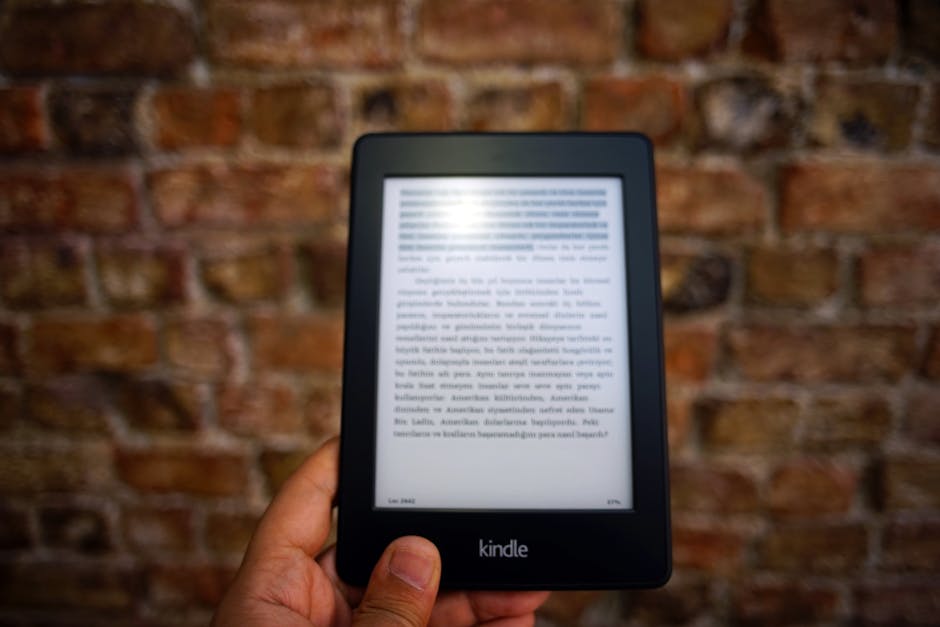As publishers in 2025, we are all grappling with the rapidly evolving landscape of digital content formats. The choices—EPUB, MOBI, Flipbooks, and truly responsive magazine experiences—are more nuanced than ever as accessibility, device diversity, and interactivity move from “nice-to-have” to essential. Here, we’ll share what we’ve learned guiding leading organizations as they transition from static print to dynamic digital publishing with platforms like 3D Issue Flipbooks and Experios. Our goal is to help you make an informed, future-proof format decision that both delights your readers and supports operational efficiency.
Understanding the Options: A Publisher-First Comparison
| Criteria | EPUB | MOBI | Flipbooks | Responsive (Experios) |
|---|---|---|---|---|
| Best Used For | Ebooks / guides for broad markets | Amazon Kindle-exclusive audiences | Magazines, catalogs, marketing reports | All devices, true digital magazines, storytelling |
| Device Reach | Most e-readers, tablets, smartphones | Kindle only | Browsers, desktop, mobile | All screens & all browsers |
| Interactivity | Minimal, mainly hyperlinks | Minimal, for text only | Rich media (video, forms, animation) | Fully interactive, adaptive, sharable |
| Distribution | Apple Books, Google Play, Kobo, direct | Amazon Kindle Store | Link, embed, your own website | Omnichannel (web, social, email) |
| Accessibility | Strong (text-to-speech, large fonts) | Decent on Kindle | Varies (depends on publisher), advancing fast | Full WCAG/ADA, validator, built-in tools |
| Analytics & ROI | Limited | Limited to Amazon stats | Advanced usage tracking & lead capture | Deep analytics dashboard & lead capture |
| Design Control | Standardized, basic control | Standardized | Full brand control, custom layouts | Template driven & fully flexible layouts |
| Cost/Speed | Low-cost or free, rapid | Low (Amazon-only), quick | Medium, still fast with automation | Fastest: up to 99% time-saving and 50x speed |
EPUB: The Multiplatform Ebook Standard
EPUB continues to be the global standard for accessible, reflowable ebook content. It’s our recommended route for distributing text-based books, educational content, and guides to the widest possible market, thanks to universal support from platforms like Apple Books and Google Play. Its major strength is flexibility—the reader can resize text, adjust colors, and the layout adapts gracefully to every device size. This is crucial if you want a frictionless reading journey across tablets, mobiles, and desktop.
- Accessibility: EPUB’s built-in features support screen readers and font adjustments, making it a responsible choice for inclusivity.
- When to choose EPUB?
- Your target includes readers with diverse accessibility needs.
- You want maximum non-Amazon distribution channels.
- Tradeoffs: Limited interactivity and analytics, making it less suitable for visual storytelling or branding-heavy publications.

MOBI: Dominating Kindle, but With Ecosystem Lock-In
MOBI was built for the Kindle ecosystem. If your publishing model depends on Amazon’s audience, then MOBI ensures seamless compatibility, guaranteed storefront presence, and the discoverability benefits that come along with it. However, MOBI is a closed format, restricting your content to Amazon devices and limiting advanced interactivity or design customization. Analytics are basic and, critically, you have little control outside Amazon’s ecosystem.
- When to choose MOBI?
- Your revenue model relies on Kindle.
- Your content is purely text-based.
- Tradeoffs: No video or sophisticated interactive media, and little brand differentiation in layout.

Flipbooks: Bringing PDF to Life With Interactivity and Analytics
We’ve seen firsthand how the move from static PDFs to digital Flipbooks can revolutionize reader engagement. Flipbooks allow you to recreate your print magazines and marketing pieces as interactive online experiences featuring video, image slideshows, animation, forms, and clickable links. The beauty is that you retain full brand control and layout artistry, while opening new data and business opportunities through robust analytics and integrations.
- Brand Experience: Flipbooks allow the visual richness and editorial design of print magazines to live on in digital—with page-flip, branded transitions, and even embedded sign-up or lead forms.
- Interactivity: Add video, audio, product carousels, or quick polls for rich engagement.
- Distribution: Share via URL, embed in your site, and even offer a downloadable version for offline reading. There’s no need to fight for app store approval or share royalties. More about 3D Issue Flipbooks.
- Analytics: We value the deep engagement metrics—see exactly how readers interact, measure time on page, and refine your editorial and advertising strategy.
- Accessibility: Newer solutions include AI-driven features (alt-text, keyboard support, color contrast adjustments), giving a significant advancement over traditional PDFs.
- Who succeeds with Flipbooks? Many of our customers—magazine publishers, marketers, and HR teams—use Flipbooks to boost both audience reach and engagement. Publications like the NFL’s official Super Bowl program and essential magazines for new fathers have found impressive digital success after converting to this format.
Responsive Digital Magazines: The New Standard for Omnichannel Publishing
In 2025, speed and user experience are everything. Our work with Experios has shown that building content once—then sharing it everywhere (web, social, email, internal apps)—is now non-negotiable. Responsive digital magazines mean your publication dynamically adapts to every device and every reader, across all channels, with true accessibility.
- Speed & Efficiency: Using template-driven, drag-and-drop tools, we’ve witnessed up to 50x faster content creation versus old methods. And, you can cut responsive content production costs by 99% compared to outsourcing or development.
- Accessibility Without Compromise: Experios delivers built-in WCAG and ADA compliance (with validator/preview tools) and offers a unique compliance style section—so all audiences can enjoy your story without barriers.
- Analytics: Advanced dashboards help maximize ROI on every publication, spotlighting exactly what content works and why.
- Omnichannel by Design: Publish once, and distribute everywhere— minimizing version management headaches.
- Lead Capture: Responsive publications can include embedded forms, so publishers can convert engagement into actionable leads or subscriptions.
- Hosting: Choose secure cloud hosting, or self-host to maintain control over access and compliance.
If you want further perspective on why responsive templates are critical, we dive into this in our post on why every publisher needs responsive magazine templates.
Publisher’s Step-by-Step Decision Guide
- Define Your Primary Audience and Devices
- If you cater to Kindle-only users: stick to MOBI.
- If your audience is on all devices, EPUB or responsive magazines are best.
- If your readers expect immersive, interactive magazine or catalog experiences: flipbooks or responsive platforms should be your focus.
- Map Your Content Types
- Primarily text-based content (novels, manuals): EPUB or MOBI shine.
- Visual, design-rich, or multi-media publications (magazines, reports, catalogs): Flipbooks or responsive solutions deliver superior engagement.
- Evaluate Accessibility and Analytics Needs
- If you need full accessibility compliance, consider responsive or EPUB. Flipbooks now offer much stronger options.
- If maximizing engagement data matters, lean toward Flipbooks or responsive for in-depth stats and lead capture.
- Weigh Speed and Cost of Production
- Tight deadlines or limited resources? Responsive tools like Experios dramatically reduce both cost and time spent, with codeless workflows and rich templates.
- Plan for Distribution Strategy
- Selling through Amazon? MOBI remains necessary.
- Targeting direct-to-reader, cross-platform reach? EPUB, Flipbooks, or responsive are preferable.
Publisher Takeaways for 2025
- There is no universal answer—choose what best matches your audience’s reading habits, your workflow, and your business goals.
- For maximum engagement and omnichannel reach, responsive magazine platforms are the new gold standard.
- Flipbooks serve as an essential bridge for publishers transitioning from static print to digital, especially for branded, interactive, data-driven content.
- EPUB and MOBI have their place, especially for conventional books, but are now supplemented—if not outright replaced—by more interactive, analytics-rich options.
Further Reading & Next Steps
To go deeper into the evolving economics of digital magazines, look at our post on the sustainability of freemium digital magazines, or if you’re optimizing layouts, check out 7 ways to refresh your digital magazine layout.
Closing Thoughts: Ready for the Next Leap?
If you’re looking to bridge the gap between classic PDF publishing and immersive, mobile-first digital experiences, we invite you to explore 3D Issue Flipbooks or Experios responsive magazine platform. Discover firsthand how leading brands upgrade their readership and engagement, while reducing costs and empowering teams.
Questions or ready to get started? Reach out to our team—let’s shape the future of publishing, together.







